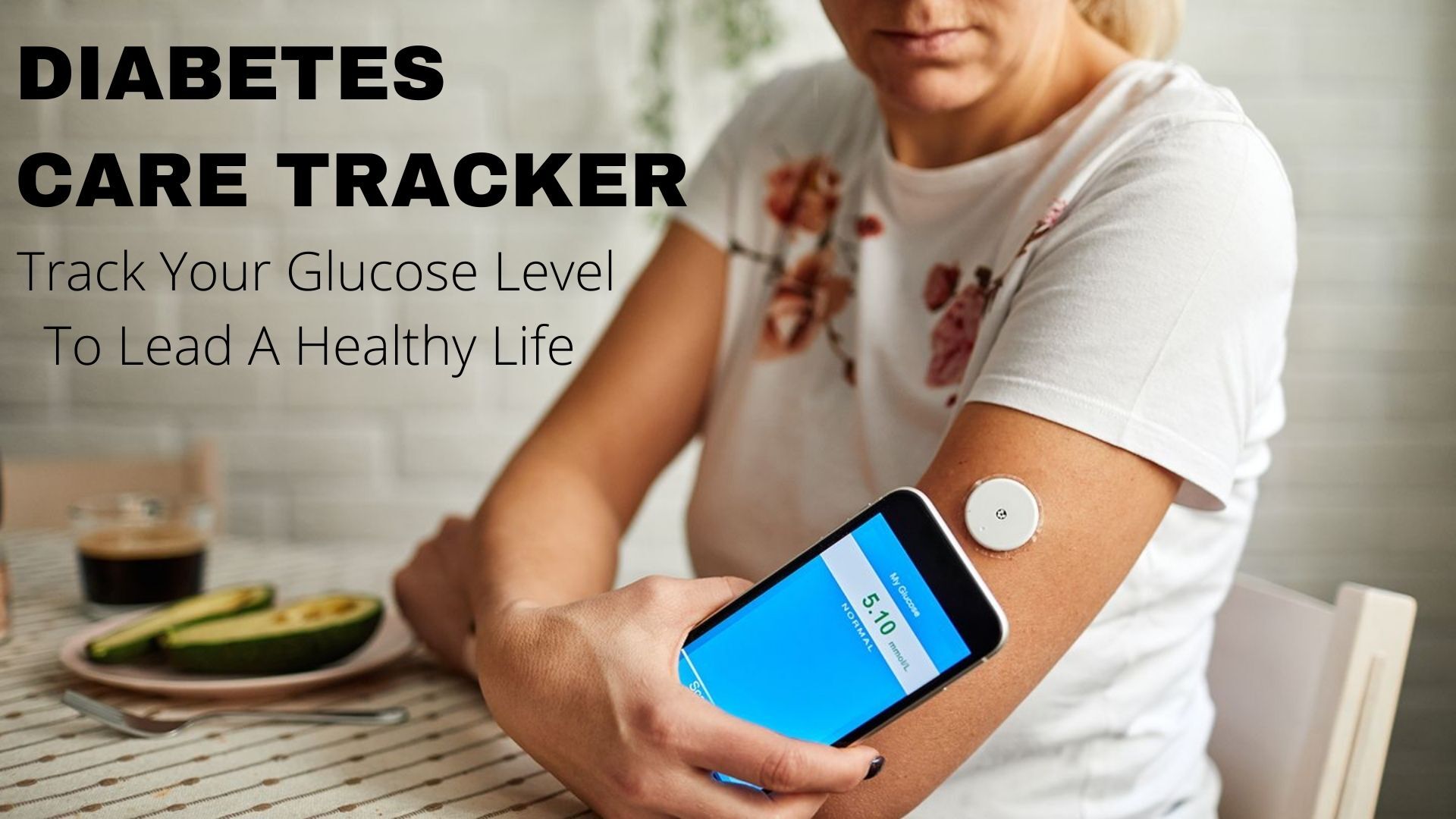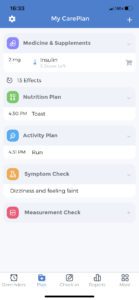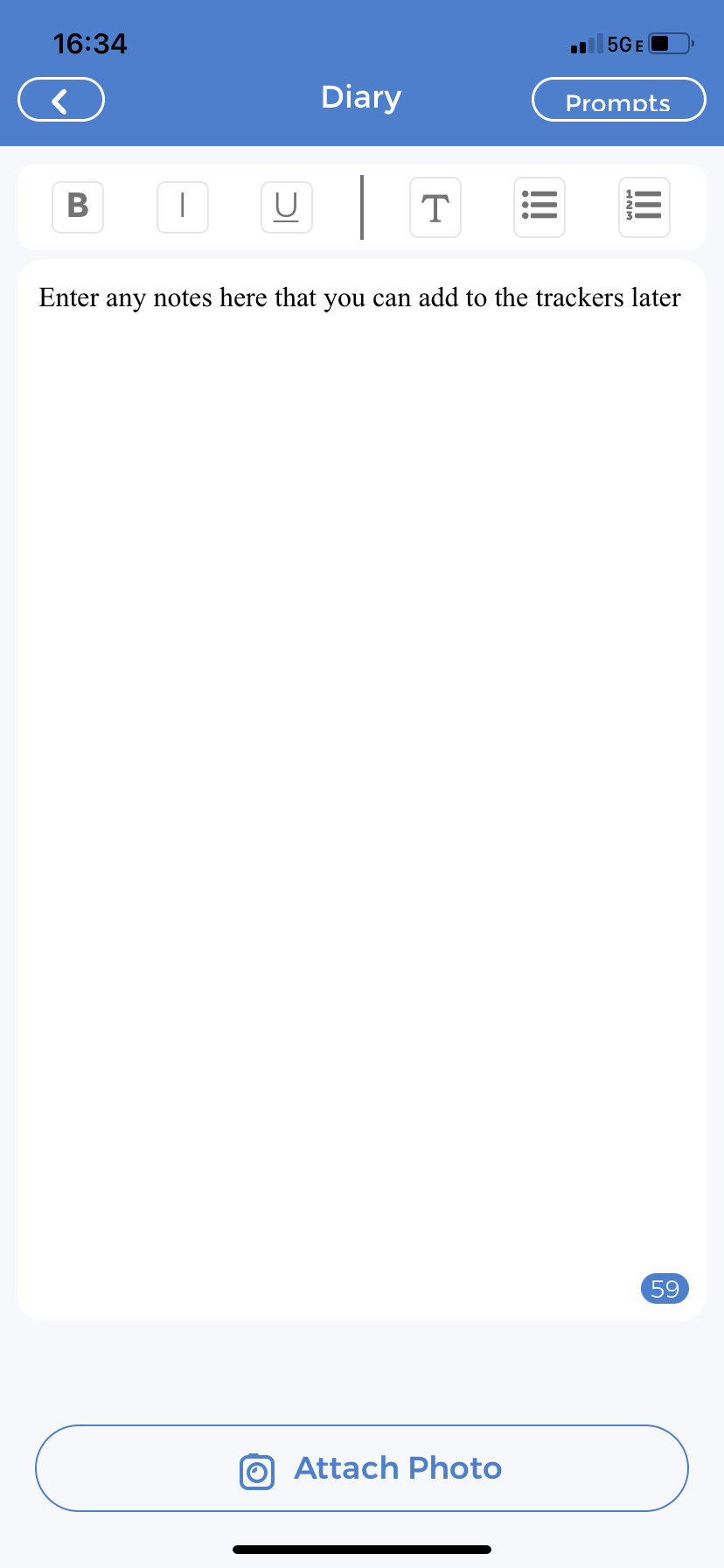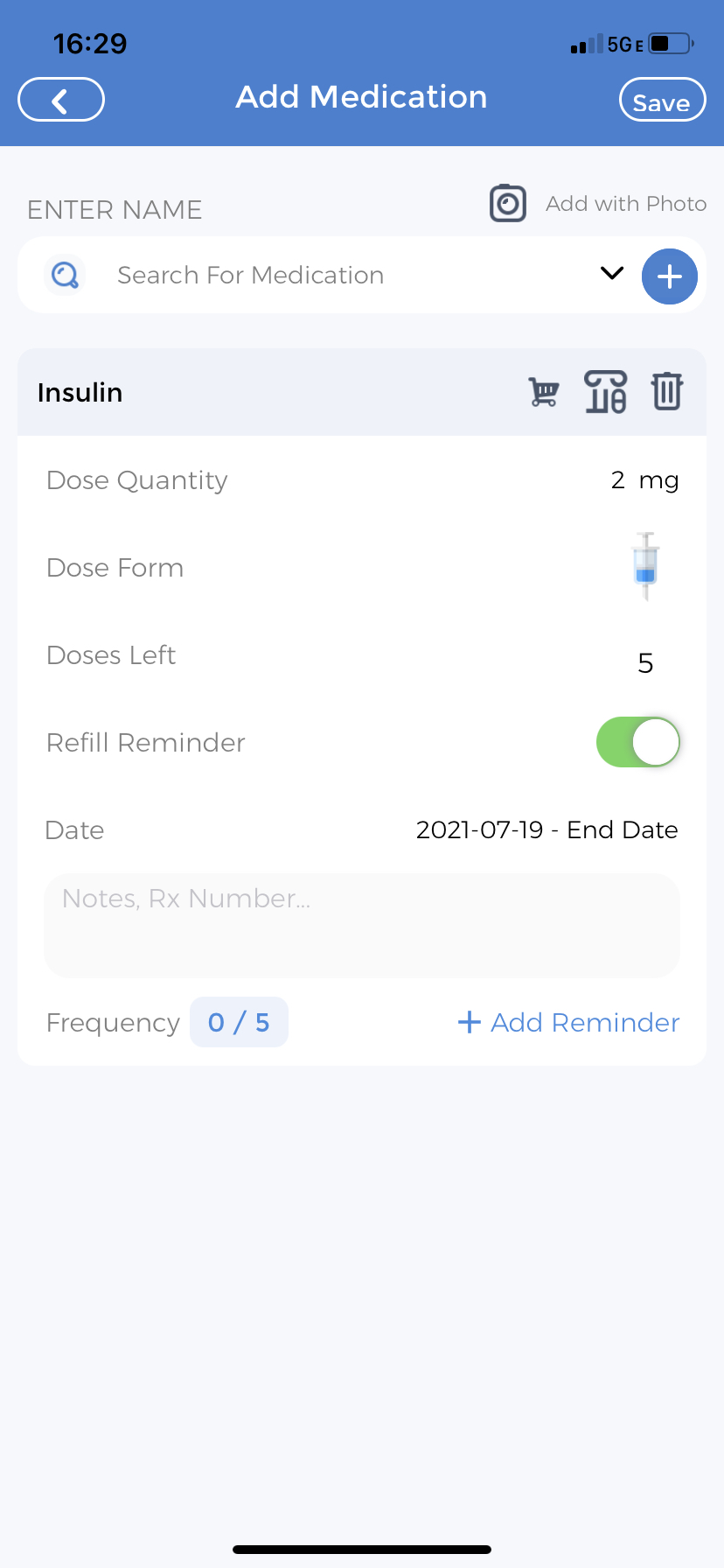
Are you diabetic or do you suspect you are diabetic? Is someone in your family diabetic? Were you recently diagnosed? Are you looking for more information on types of diabetes and potential remedies? Do you need a one-stop shop of information? Look no further. This blog highlights the different types of diabetes, causes, symptoms and remedies for you. You can easily keep track of everything in the diabetes care tracker in the CareClinic app. Read further and you’ll get a full workup on what the app does and how you can use it.
Table of Contents
What is Diabetes?
Diabetes is a disease in which your blood sugar is too high. Sugar comes from the food you eat. Insulin is the hormone that metabolizes sugar to give you energy. There are two main types of diabetes a person can develop: Type 1 and Type II. These types of diabetes are chronic. The best way to keep track of your diabetes is through a diabetes care tracker plan provided by your doctor. You will learn what a diabetes care tracker is, later in the blog.
What is the Structure of a Glucose Molecule?
A glucose molecule has a chemical formula of C6H12O6 (6 carbon atoms, 12 hydrogen atoms and 6 oxygen atoms). The glucose molecule can exist in an open chain as well as ring form. Glucose is mainly made by plants and most algae during photosynthesis. It is the most important source of energy in all organisms. Glucose is one of the safest and most effective medicines needed in a health system.
What is Type 1 Diabetes?
Type 1 diabetes is also known as juvenile or insulin-dependent diabetes. Within type 1 the pancreas produces little or no insulin. No insulin results in no energy entering your cells. Type 1 diabetes also naturally occurs in children or adolescents, however, it can less commonly develop in adulthood as well. There is no cure for type 1 diabetes and treatment focuses on diet, exercise and insulin shots.
Causes of Type 1 Diabetes
Type 1 diabetes’ true cause is still unknown. For now, doctors have diagnosed the reason for type 1 diabetes as the following reasons:
- Firstly – the body’s immune system mistakes the insulin for harmful bacteria and destroys it
- Secondly – if someone in your immediate family is diabetic, you could genetically be diabetic too
- Finally – exposure to viruses and other environmental factors can cause diabetes
Symptoms of Type 1 Diabetes
Type 1 diabetes can have a sudden onset. The most common symptoms are as follows:
- Increased thirst
- More frequent urination
- Hunger and fatigue
- Sudden and extreme weight loss
- Irritability
- Fatigue
- Blurred vision
- For children – bed-wetting if they never wet the bed before
Risk Factors for Type 1 Diabetes
It is important to know the risk factors that cause type 1 diabetes. By knowing the risk factors you can work towards rectifying or avoiding them all together:
- Family history – Anyone with parents or siblings with type 1 diabetes is more likely to develop type 1 diabetes
- Genetics
- Age – Although type 1 diabetes can appear at any age, it appears in children between 4 and 7 years old initially or in children between 10 and 14 years old.
What is Type 2 Diabetes?
Type 2 diabetes is a chronic disease that causes too much sugar to circulate in your blood. The two main problems for type two diabetes are, firstly, your body does not produce enough insulin and secondly, your cells respond poorly to the insulin and therefore uptake less sugar. It is called adult-onset diabetes because a majority of people who experience it are adults. However, you can develop type 2 diabetes as a child as well. Usually, children who are high on the obesity index develop type 2 diabetes. Similar to type 1, there is no cure for type 2 diabetes but treatment includes losing weight, eating healthy and regularly exercising.
Causes of Type 2 Diabetes
Type 2 diabetes is primarily caused by two problems. They are interrelated but exacerbated by being inactive and overweight. The problems are:
- Firstly – Cells in muscle, fat and the liver become resistant to insulin. Since these cells don’t interact in a normal way with insulin, they don’t take in enough sugar
- Secondly – The pancreas is unable to produce enough insulin to manage blood sugar levels
Symptoms of Type 2 Diabetes
Symptoms often develop slowly. You can be living with type 2 diabetes for years and not know you have the disease. Therefore it is important to know the most common symptoms are:
- Increased thirst
- More frequent urination
- Unintended weight loss
- Hunger and fatigue
- Blurred vision
- Slow-healing sores
- Frequent infections
- Numbness in hands and feet
- Areas of darkened skin in the armpits and neck
Risk Factors of Type 2 Diabetes
Same as type 1 diabetes, it is important to know the causes of type 2 diabetes. Armed with the knowledge you can work towards changing some aspects of your life as needed to avoid developing diabetes. The most common risk factors are:
- Being overweight – storing fat mainly in your abdomen indicates a greater risk
- Low physical activity
- Genetics
- Being part of a minority group – African-American, Hispanic, Native American and Asian people, and Pacific Islanders
- Blood lipid levels – low levels of high-density lipoprotein (HDL) cholesterol and high levels of triglycerides.
- Age – after turning 45 you are more at risk
- Pre-diabetes
- Pregnancy-related risks – your risk of developing type 2 diabetes increases if you developed gestational diabetes (explained below) or if you gave birth to a baby weighing more than 9 pounds
- Polycystic ovary syndrome (PCOS) – irregular menstrual periods, excess hair growth and obesity
- Areas of darkened skin – usually in the armpits and neck indicates insulin resistance
How Can Fast-Acting Insulin Help Diabetes?
Fast-acting insulin acts most like insulin produced by the human pancreas. It quickly drops the blood sugar level and works for a short time. If fast-acting insulin is used instead of short-acting insulin at the start of dinner it can prevent a severe drop in blood sugar during the night. This works best with type 2 diabetes. With type 1 diabetes, fast-acting insulin should only be used in combination with long-acting insulin. When fast-acting insulin is introduced into the blood, to prevent a patient from experiencing hyperglycemia, the long-acting insulin is used to stabilize the blood sugar level over long periods of time.
Testing for Diabetes
There are a few tests that doctors prescribe to find out if you have diabetes:
- Glycated Hemoglobin (A1C) test – This is a blood test. It is one of the few blood tests that doesn’t require fasting. The test indicates your average blood sugar level for the past two to three months. Most importantly, it measures the percentage of blood sugar attached to hemoglobin, the oxygen-carrying protein in red blood cells. The higher your blood sugar levels, the more sugar-attached hemoglobin you possess.
- Firstly an A1C level of 6.5% or higher on two separate tests indicates that you have diabetes
- Secondly, an A1C between 5.7 and 6.4 % indicates pre-diabetes
- Thirdly an A1C level below 5.7% is considered normal
Tests Apart from Glycated Hemoglobin (A1C)
- Random Blood Test – By randomly testing blood sugar multiple times you will have a baseline understanding of where your blood sugar levels are at different times of the day. Regardless of when you last ate, a blood sugar level of 200 milligrams per deciliter (mg/dL) — 11.1 millimoles per litre (mmol/L) — or higher suggests diabetes
- Fasting Blood Sugar Test – For accurate readings, you have to fast overnight before taking this blood test. A fasting blood sugar level of less than 100 mg/dL (5.6 mmol/L) is normal. A fasting blood sugar level from 100 to 125 mg/dL (5.6 to 6.9 mmol/L) is labelled pre-diabetes. Finally, a fasting blood sugar of 126 mg/dL (7 mmol/L) or higher on two separate tests means you are diabetic.
- Oral Glucose Tolerance Test – For this test you have to fast overnight, take your blood sugar and then eat a sugary substance or drink a sugary drink. Your doctor will then test you over a two-hour period to obtain multiple blood sugar readings. The test tries to measure how well your body metabolizes sugar.
Gestational Diabetes
Although type 1 and type 2 are the most common, there is one other type of diabetes that exists called gestational diabetes. Gestational diabetes is a type of diabetes diagnosed for the first time during pregnancy. It causes high blood sugar and can negatively affect the pregnancy and therefore the baby’s health. On the bright side, it is controllable through good food, exercise and in some cases medication. Something important to note is if you have had gestational diabetes as a pregnant woman you are at higher risk to develop type 2 diabetes. It is important to get yourself tested frequently to catch such complications early.
Causes of Gestational Diabetes
Unfortunately, there is no known cause for gestational diabetes. However, it is important to note that approximately 10% of all women in the United States, and between 7 to 10% of all pregnancies globally develop gestational diabetes.
Symptoms of Gestational Diabetes
Common symptoms exist with type 1 and type 2 diabetes. It is important to remember that the symptoms listed also naturally occur due to pregnancy. If you feel the symptoms described happen more than they should, contact your doctor immediately. The symptoms are:
- Thirstier than usual
- Hungrier and eat more than usual
- Pee more than usual
Risk Factors for Gestational Diabetes
There are some things women can work on before getting pregnant. This will help reduce the risk of contracting gestational diabetes. However, there are some risk factors that cannot be changed and should simply be noted. The most common risk factors are:
- Being overweight before pregnancy
- Part of a minority group – African-American, Asian, Hispanic, Alaska Native, Pacific Islander, or Native American
- Pre-diabetes – blood sugar is higher than average but not high enough to be diagnosed as diabetes
- Polycystic Ovary Syndrome (PCOS)
- Older than 25
- Given birth to a baby previously who weighed more than 9 pounds
While treatment for all types of diabetes has been mentioned as healthy food and a healthy lifestyle, another useful tip is to use a diabetes care tracker to help maintain that healthy lifestyle. The next section will define what that is and specifically highlight how the CareClinic app can be used as an effective diabetes care tracker.
Testing For Gestational Diabetes
There is a two-step series of tests your doctor can administer to determine gestational diabetes.
- Firstly – Initial Glucose Challenge Test – You will start the test by drinking a syrup made of glucose solution. An hour later the doctor will measure your blood glucose level. A blood sugar level below 140 mg/dL (7.8 mmol/L) is usually considered normal on a glucose challenge test. If your blood sugar level is higher than normal, it does not definitively mean gestational diabetes. However, the risk is higher.
- Secondly – Follow-Up Glucose Challenge Test – You will fast overnight and take you fasting blood sugar level. Then you will drink another glucose solution, with a higher concentration of glucose than in the previous test. The doctor will check your blood glucose level every hour for a three-hour period. If at least two of the blood sugar readings are higher than the normal values established for each hour test, you’ll be diagnosed with gestational diabetes.
The next section will cover what a diabetes care tracker is and how you should CareClinic as a tracker. All the features of the CareClinic app are thoroughly explained. You will know the best way to use the app and what features to focus on within the app once the section is complete.
What is a Diabetes Care Tracker?
A diabetes care tracker is an application that helps with diabetes management. Knowledge is power and the more you know about the disease the better prepared you are to deal with it. The tracker allows you to keep track of your sugar intake and sugar levels, food intake and amount and your exercise routine. You can generally share the results with your doctor and create a plan to track on the same application, be it a change in lifestyle or additional medication needs.
What Diabetes Care Tracker Should you Use?
The CareClinic app is an all-in-one care app. Anyone can use and access the interface. 24 hours a day. It is so easy to do. The most important feature of the app is building a unique care plan. Other features are offered which, depending on need, allow you to keep a diary for glucose tracking, track medication, and learn about specific topics through its blog articles. This combination of functions makes it the ideal app to use. The following subsections will have detailed explanations on how to use each feature and will be accompanied by visual screenshots for easy step-by-step learning.
Diabetes Care Plan

Diary Feature for Diabetes Care Tracker Use
With diary entries, you can type up to 144 words per entry and post an unlimited number of
The premium account has access to 16 journal prompts. You can also add lists, bold, italicize, and underline important statements. You can change the colour of the text to highlight your mood. Finally, you can add photos to personalize your diary. They can range from family, friends or situations, to motivational pictures of the internet, and everything in between.
Tracking Medication Through a Diabetes Care Tracker

In the frequency reminder, you can add many features. Add quantity of dose, reminder time, and how many days a week you have to take the medication. You can also add a photo of the insulin pump and its expiry date to be reminded when you need to change it out.
Blog Articles Similar to Diabetes Care Trackers and Other Chronic Diseases
CareClinic is “Google News” certified. This means that Google has approved the information presented as valid and credible. Instead of trudging through hundreds of websites, you can use this one platform to obtain the information you seek. The blog holds hundreds of papers ranging from mental health to specific illnesses. Each article is carefully curated, researched, and reviewed by a team of experts to give you up-to-date scientifically certified information.
In Conclusion
In conclusion, if you start to feel your blood glucose levels drop often, or if you smell sweet urine, talk to your doctor immediately. Diabetes is a chronic illness that you will be faced with for the rest of your life so start tracking it early. The CareClinic app and its features will make it easy for you to keep track of your symptoms, medications and glucose levels to lead a long and fulfilled life. The CareClinic app is available on three sites: the App Store for iOS users, Google Play for Android users and on the CareClinic website for direct download. Get tracking today.


